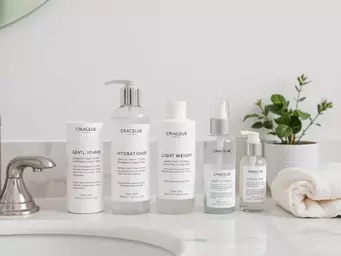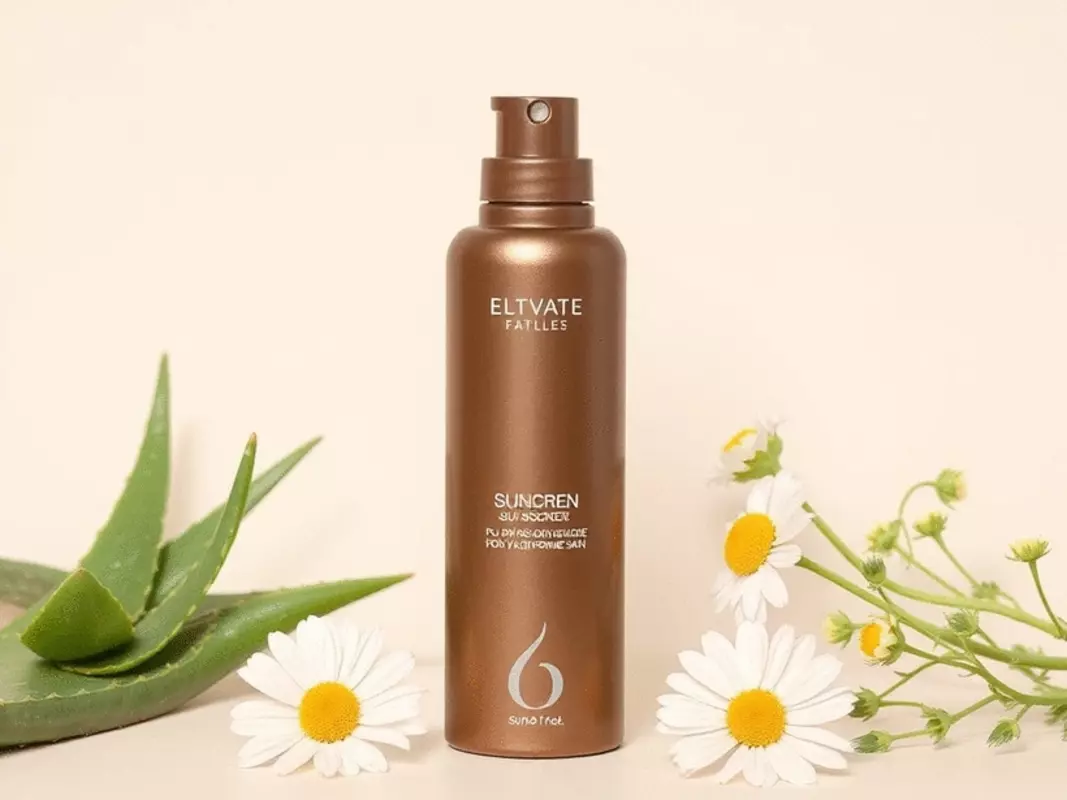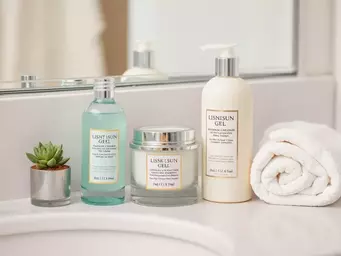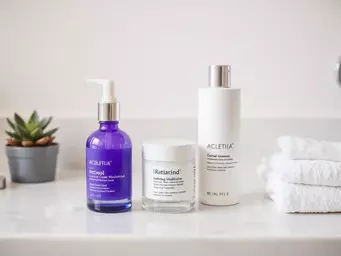Safe Acne Treatments for Dry Skin
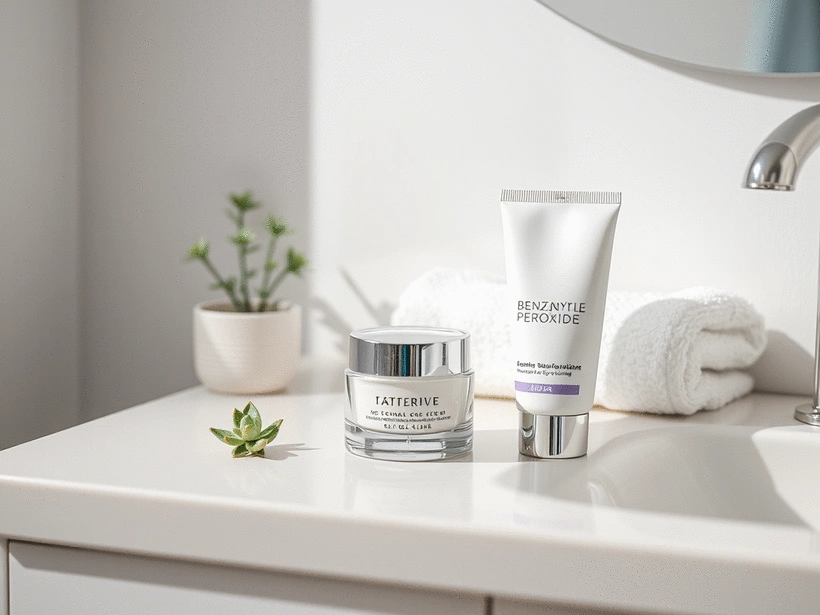
Are you struggling to find the right balance in your skincare routine, especially if you have dry, acne-prone skin? The combination of retinol and benzoyl peroxide might be the key to achieving a healthier complexion. Understanding how these powerful ingredients work together can transform your approach to acne treatment.
What You Will Learn
- Retinol promotes cell turnover, improving skin texture and reducing signs of aging.
- Benzoyl peroxide effectively kills acne-causing bacteria, reducing breakouts.
- Combining retinol and benzoyl peroxide provides a two-pronged approach to tackle acne.
- Patch testing new products is crucial to prevent irritation and ensure skin tolerance.
- Hydration is essential; always follow treatments with a gentle moisturizer to nourish the skin.
- Introduce these ingredients gradually to minimize potential side effects like redness and peeling.
Understanding Retinol and Benzoyl Peroxide: Key Differences and Usage
This visual compares the properties, benefits, and usage of Retinol and Benzoyl Peroxide, highlighting considerations for dry, acne-prone skin.
Retinol (Vitamin A Derivative)
- **Primary Action:** Cell Turnover & Skin Texture Improvement
- **Benefits:** Reduces fine lines, pigmentation, unclogs pores, encourages new skin growth.
- **Usage Note:** Introduce gradually, use with moisturizer, can cause irritation.
Benzoyl Peroxide (Antibacterial Agent)
- **Primary Action:** Kills Acne-Causing Bacteria
- **Benefits:** Reduces existing breakouts, decreases inflammation, prevents new acne.
- **Usage Note:** Can cause dryness/irritation, use carefully, patch test recommended.
Combination Use Considerations
- **Synergy:** Retinol clears pores, BP kills bacteria – powerful duo.
- **Mitigate Irritation:** Use at different times of day or alternate days.
- **Crucial:** Always use a gentle moisturizer to support skin barrier.
Safe Skincare Practices
- **Patch Test:** Before full application, check for reactions.
- **Listen to Skin:** Reduce frequency if irritation occurs.
- **Professional Help:** Consult a dermatologist for persistent issues.
Understanding Retinol and Benzoyl Peroxide for Dry Skin
As someone who has dedicated years to helping individuals with dry, acne-prone skin, I often encounter questions about effective treatments. Two ingredients that frequently come up are retinol and benzoyl peroxide. Both of these compounds are well-known in the skincare world, but how do they work together, especially for those with sensitive skin? Let’s take a dive into their properties and how they can fit into your routine.
What Are Retinol and Benzoyl Peroxide?
Retinol, a derivative of vitamin A, is celebrated for its ability to promote cell turnover and improve skin texture. It helps with fine lines, pigmentation, and acne by unclogging pores and encouraging new skin growth. On the other hand, benzoyl peroxide is a powerful antibacterial agent that targets the bacteria responsible for acne, effectively reducing breakouts. For a deeper understanding of how these treatments work, you can refer to insights from the American Academy of Dermatology.

Understanding these ingredients is crucial for anyone navigating the complexities of acne treatment. When used correctly, they can be potent allies in your quest for clearer skin!
- Retinol: Improves skin texture and reduces signs of aging.
- Benzoyl Peroxide: Kills acne-causing bacteria and reduces inflammation.
- Combination: Together, they tackle multiple aspects of acne and promote healthier skin.
How Do These Ingredients Work Together for Acne?
The beauty of combining retinol and benzoyl peroxide lies in their complementary functions. While retinol enhances cell turnover, which helps clear pores, benzoyl peroxide works to eliminate existing bacteria on the skin. This two-pronged approach can be incredibly effective, especially for those struggling with persistent breakouts. Research, such as that published by NCBI, often highlights the synergistic benefits of combining these ingredients.
However, it's essential to approach this combination with care. Start by using them at different times of the day or on alternating days to minimize irritation. This way, you can enjoy the benefits of both without overwhelming your skin.
Addressing Common Concerns: Side Effects and Irritation
Despite their benefits, both retinol and benzoyl peroxide can cause irritation, especially for those with dry skin. Common side effects include redness, peeling, and dryness. To mitigate these effects, it’s vital to introduce these ingredients gradually into your routine.
As a dermatologist, I always advise my patients to listen to their skin. If irritation occurs, consider reducing the frequency of application or consulting with a dermatologist for personalized advice. Remember, your skin’s health is a priority!
Exploring the Role of Vitamin A in Skin Health
Vitamin A, from which retinol is derived, plays a crucial role in maintaining overall skin health. It aids in the repair of skin cells and supports the skin’s barrier function, which is especially vital for those with dry and acne-prone skin. Incorporating it into your routine can enhance your skin's resilience while addressing common concerns.
If you're looking to gain the full benefits of retinol, pairing it with a good moisturizer is key. This will help keep your skin hydrated while reaping the rewards of this powerful ingredient.
Pro Tip
When using retinol and benzoyl peroxide, consider incorporating a soothing serum with ingredients like aloe vera or niacinamide. These can help calm irritation and enhance your skin's hydration, making it easier to tolerate these potent ingredients.
Frequently Asked Questions (FAQs)
Can I use retinol and benzoyl peroxide together if I have dry, acne-prone skin?
Yes, you can, but it's crucial to introduce them gradually and carefully. Use them at different times of the day or on alternating days to minimize irritation. Always follow with a gentle moisturizer.
What are the main benefits of retinol for acne?
Retinol promotes cell turnover, which helps to unclog pores, improve skin texture, reduce fine lines, and address pigmentation, making it effective for acne and anti-aging.
How does benzoyl peroxide help with acne?
Benzoyl peroxide is an antibacterial agent that kills the bacteria responsible for acne, reducing existing breakouts and preventing new ones from forming.
What are common side effects of using these ingredients?
Common side effects include redness, peeling, and dryness. These can be mitigated by gradual introduction, proper hydration, and listening to your skin's reactions.
Why is patch testing important before using new acne treatments?
Patch testing helps you determine how your skin will react to a new product like retinol or benzoyl peroxide without exposing your entire face to potential irritation or adverse reactions.
When should I consult a dermatologist for my acne?
You should consult a dermatologist if you experience persistent acne that doesn't improve with over-the-counter treatments, severe irritation, allergic reactions, or acne accompanied by significant scarring.
Summarizing Key Takeaways for Safe Acne Treatment
As we navigate through the complexities of treating dry, acne-prone skin, it's essential to remember a few key takeaways that can make your skincare journey smoother and more effective. The combination of retinol and benzoyl peroxide can be powerful, but it requires careful handling to maintain a healthy skin barrier and avoid irritation. Here’s a recap of vital points to keep in mind:
- Patch test any new product before a full application to ensure your skin tolerates it well.
- Consistency is key—make gradual changes to your routine to monitor how your skin responds.
- Hydration is crucial; always follow treatments with a gentle moisturizer to lock in moisture.
Each of these steps will help you manage your skin more effectively. Remember, understanding your skin's unique needs is a crucial part of achieving a radiant complexion!
Importance of Patch Testing Before Full Application
Patch testing is a simple yet effective way to prevent potential irritations when introducing new ingredients like retinol and benzoyl peroxide. It involves applying a small amount of the product to a discreet area of your skin, typically on your wrist or behind your ear, and observing for any adverse reactions over 24 hours. This process helps identify how your skin might react without exposing your entire face to possible irritation.
For those with dry, acne-prone skin like many of my patients at Dry Acne Solutions, patch testing can provide peace of mind. It allows you to confidently incorporate new treatments into your routine without the fear of unexpected breakouts or discomfort!
Long-Term Care and Skin Barrier Maintenance
Maintaining a healthy skin barrier is essential for anyone dealing with dryness and acne. Over time, daily stressors like harsh weather, pollution, and even certain skincare products can compromise this barrier. Here are a few strategies to help you preserve your skin’s integrity:
- Use gentle cleansers that do not strip your skin of its natural oils.
- Incorporate a rich moisturizer that contains ingredients like ceramides or hyaluronic acid to support hydration.
- Limit the use of harsh exfoliants and instead opt for mild alternatives that respect your skin's barrier.
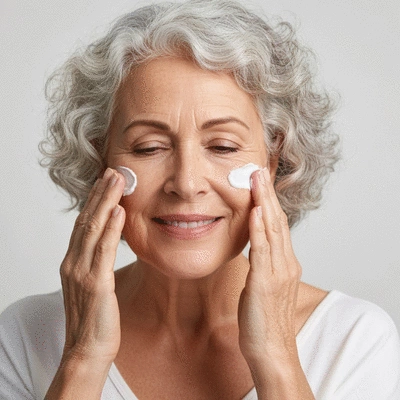
By following these guidelines, you not only manage acne effectively but also nourish your skin in the long run. It’s all about creating that balance to achieve the healthy glow we all desire!
Acne Prevention: Best Practices for Healthy Skin
Prevention is often more effective than treatment when it comes to acne. Here are some best practices you can adopt to keep breakouts at bay while caring for your dry skin:
- Stay hydrated by drinking plenty of water throughout the day.
- Maintain a balanced diet rich in vitamins and minerals to support skin health.
- Develop a consistent skincare routine that includes cleansing, moisturizing, and targeted treatments. Information from digitalcommons.kansascity.edu further emphasizes the importance of a well-structured skincare regimen for managing acne.
- Avoid touching your face to minimize the transfer of bacteria and oils.
Incorporating these habits into your daily life will set a solid foundation for clear, healthy skin. Remember, it’s about creating a sustainable routine that works for you!
Encouragement to Consult with a Dermatologist
While self-care and at-home treatments are essential, there are times when seeking professional advice is crucial. As someone who has spent over a decade in dermatology, I can’t stress enough the value of consulting with a dermatologist to tailor a treatment plan that suits your specific skin needs.
Understanding When You Should Seek Professional Advice
It’s important to recognize when to reach out for expert help. If you experience:
- Persistent acne that does not improve with over-the-counter treatments
- Severe irritation or allergic reactions
- Acne accompanied by significant scarring or skin changes
These are all signs that it's time to consult with a dermatologist who can provide specialized care tailored to your unique situation. At Dry Acne Solutions, we believe in empowering you with the right information, but professional guidance can make a significant difference in your skincare journey!
Final Thoughts on Your Acne Treatment Journey
Acne treatment, especially for those with dry skin, is often a journey filled with trial and error. But remember, you are not alone. By educating yourself and utilizing resources like our comprehensive guides, you are taking the necessary steps toward managing your skin effectively. Always be patient and kind to yourself throughout this process. As you implement these tips, I encourage you to share your experiences with us! Your journey can inspire others who are facing similar challenges.
Recap of Key Points
Here is a quick recap of the important points discussed in the article:
- Retinol promotes cell turnover, improving skin texture and reducing signs of aging.
- Benzoyl peroxide effectively targets acne-causing bacteria and reduces inflammation.
- Combine retinol and benzoyl peroxide carefully to avoid irritation; consider using them at different times.
- Always patch test new products before full application to prevent adverse reactions.
- Hydration is crucial; follow treatments with a gentle moisturizer to maintain skin moisture.
- Consult a dermatologist for persistent acne, severe irritation, or when in doubt about your skincare routine.
